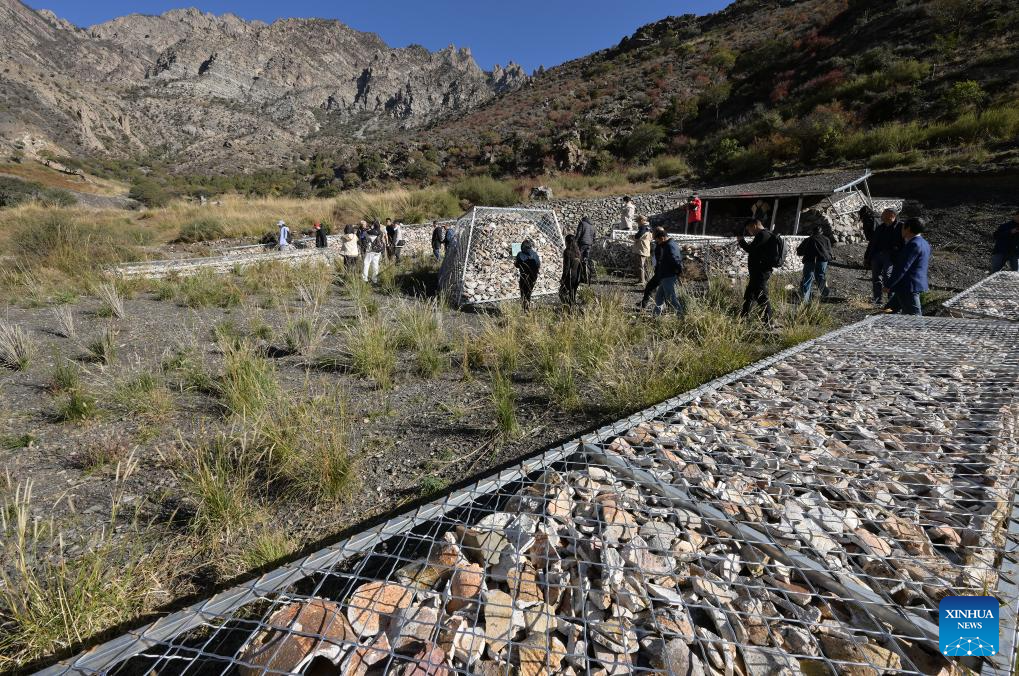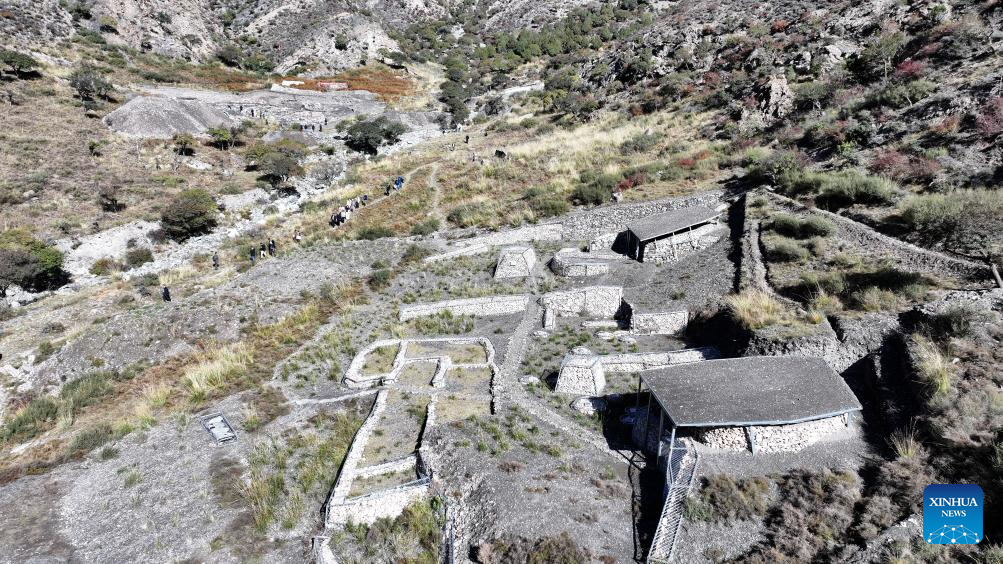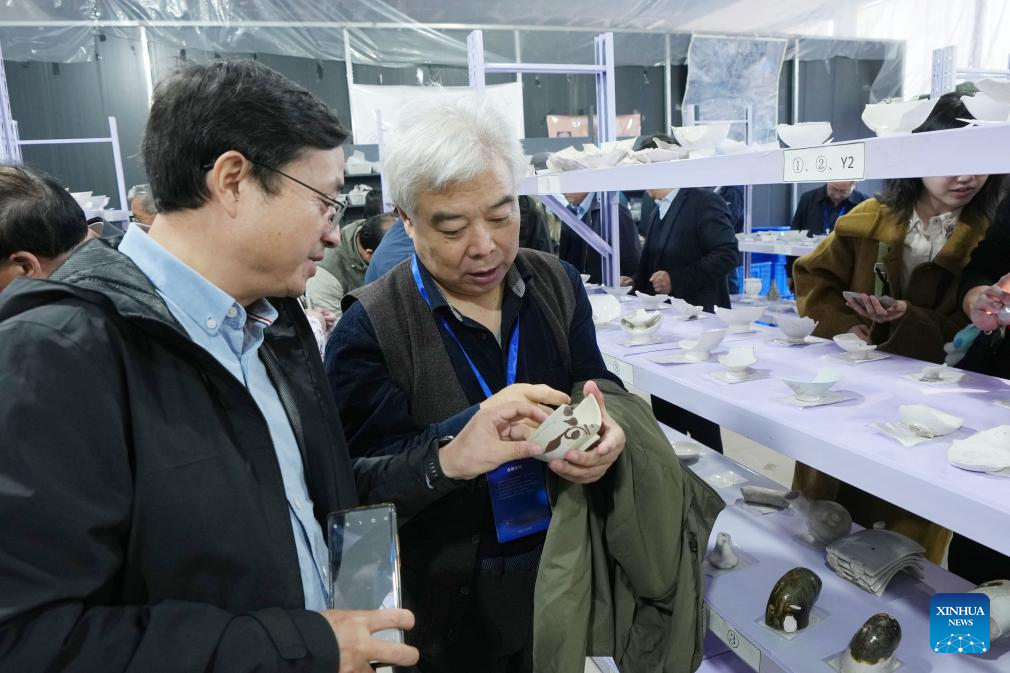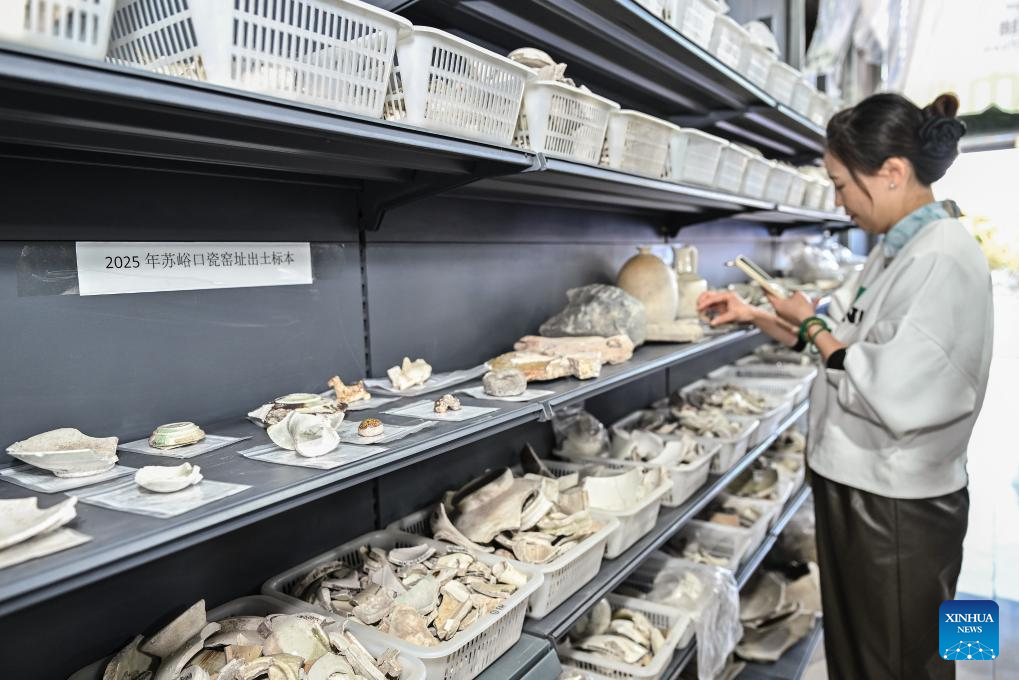Remnants of Suyukou kiln in Yinchuan, China's Ningxia
2025-10-23 11:28:53 來(lái)源:Xinhua

Archaeologists use felt, unearthed saggar fragments and barbed wire to backfill and protect the remains of an excavation area at the remnants of the Suyukou kiln in Yinchuan, capital of northwest China's Ningxia Hui Autonomous Region, Oct. 13, 2025. Remnants of the Suyukou kiln were discovered in 2017 in Yinchuan, capital of Ningxia, and cover an area of roughly 40,000 square meters.
From 2021 to 2025, archaeologists from the Ningxia Institute of Cultural Relics and Archaeology and Fudan University found remnants of workshops featuring eight furnaces, as well as pits where workers used to mine porcelain clay, coal, quartz, lime and other raw materials and fuels, which were needed to make porcelain.
The Suyukou site is believed to be the earliest Western Xia Dynasty kiln site found to date in China. Judging from its production scale and saggars marked with the character guan, which literally means official, archaeologists believe that the Suyukou kiln was an official kiln producing bowls, cups, plates and other daily utensils -- mainly for the royal family during the Western Xia Dynasty (1038-1227). (Xinhua/Li He)

An aerial drone photo taken on Oct. 13, 2025 shows an excavation area of the remnants of the Suyukou kiln in Helan Mountain in Yinchuan, capital of northwest China's Ningxia Hui Autonomous Region. Remnants of the Suyukou kiln were discovered in 2017 in Yinchuan, capital of Ningxia, and cover an area of roughly 40,000 square meters. (Xinhua/Wang Peng)

Archaeologists view samples of excavated porcelain at the cultural relics storage room of the archaeologist team working on the remnants of the Suyukou kiln, in Yinchuan, capital of northwest China's Ningxia Hui Autonomous Region, Oct. 13, 2025. Remnants of the Suyukou kiln were discovered in 2017 in Yinchuan, capital of Ningxia, and cover an area of roughly 40,000 square meters. (Xinhua/Wang Peng)

An archaeologist views samples of recently excavated white porcelain at the cultural relics storage room of the archaeologist team working on the remnants of the Suyukou kiln, in Yinchuan, capital of northwest China's Ningxia Hui Autonomous Region, Oct. 13, 2025. Remnants of the Suyukou kiln were discovered in 2017 in Yinchuan, capital of Ningxia, and cover an area of roughly 40,000 square meters. (Xinhua/Li He)

A staff member displays the fragment of a saggar marked with the character "guan," which literally means official, inside the cultural relics storage room of the archaeologist team working on the remnants of the Suyukou kiln, in Yinchuan, capital of northwest China's Ningxia Hui Autonomous Region, Oct. 13, 2025. Remnants of the Suyukou kiln were discovered in 2017 in Yinchuan, capital of Ningxia, and cover an area of roughly 40,000 square meters. (Xinhua/Li He)
Edit:董麗娜
The copyright of the article and the picture belongs to the original author. If there is any infringement, please contact to delete it
